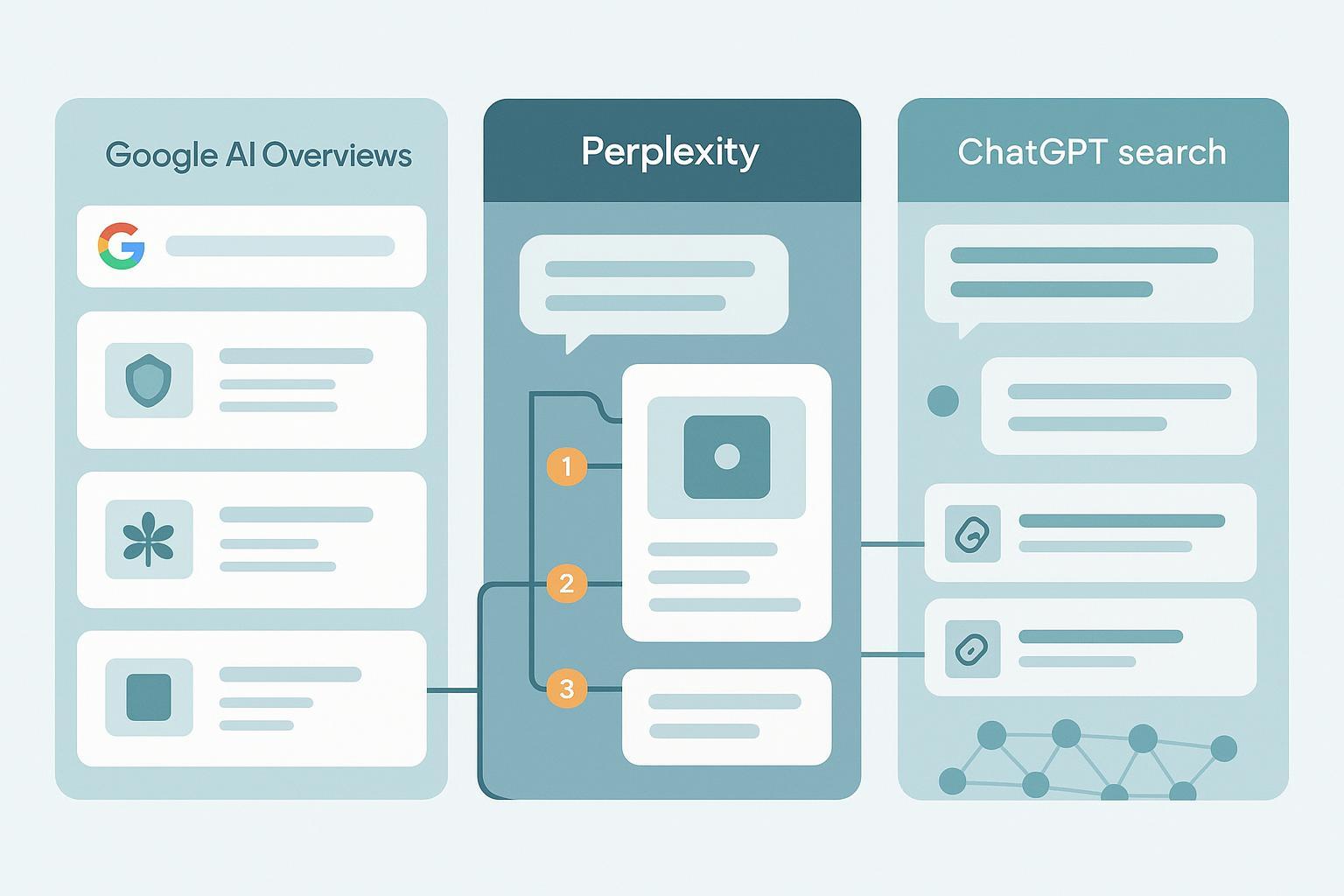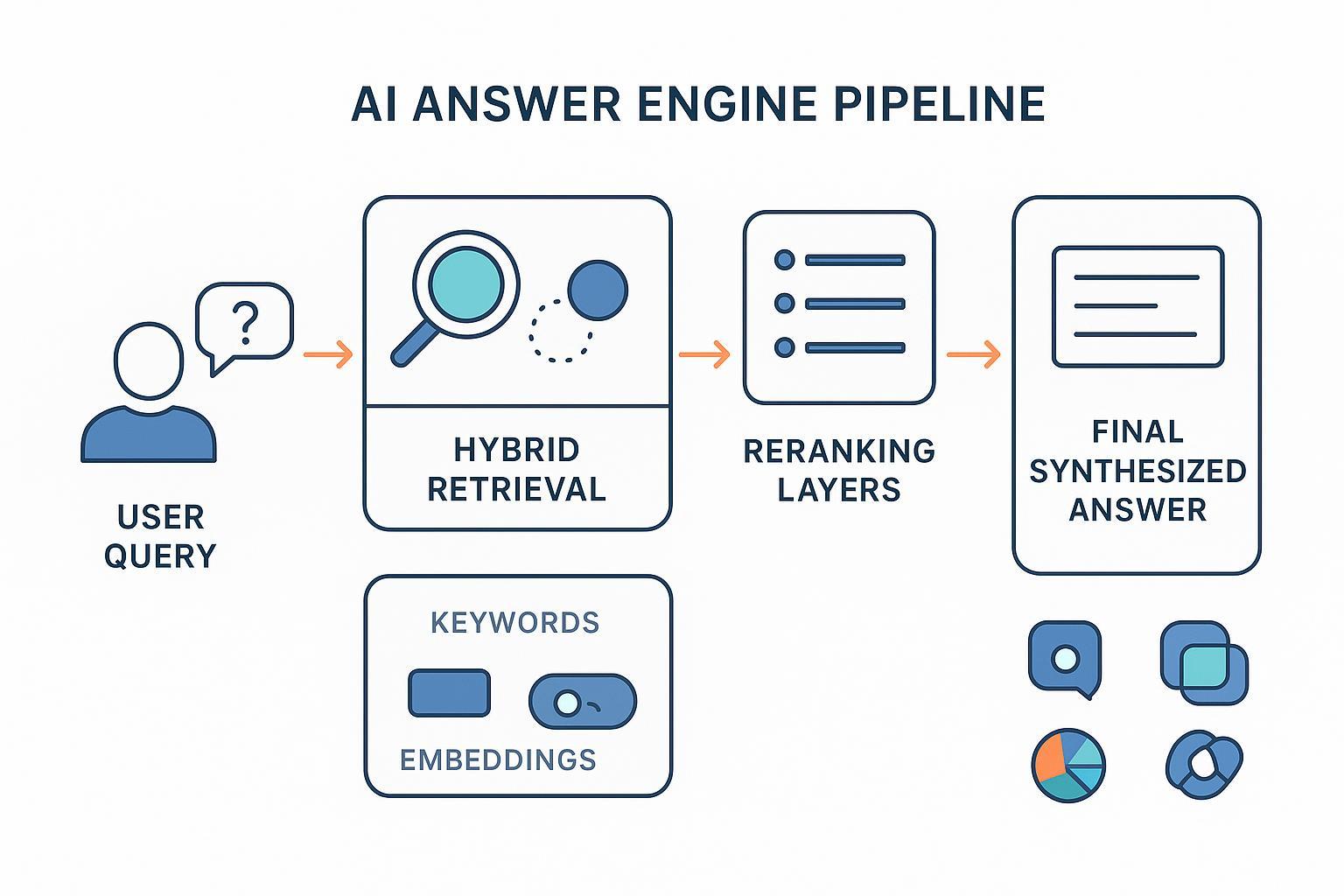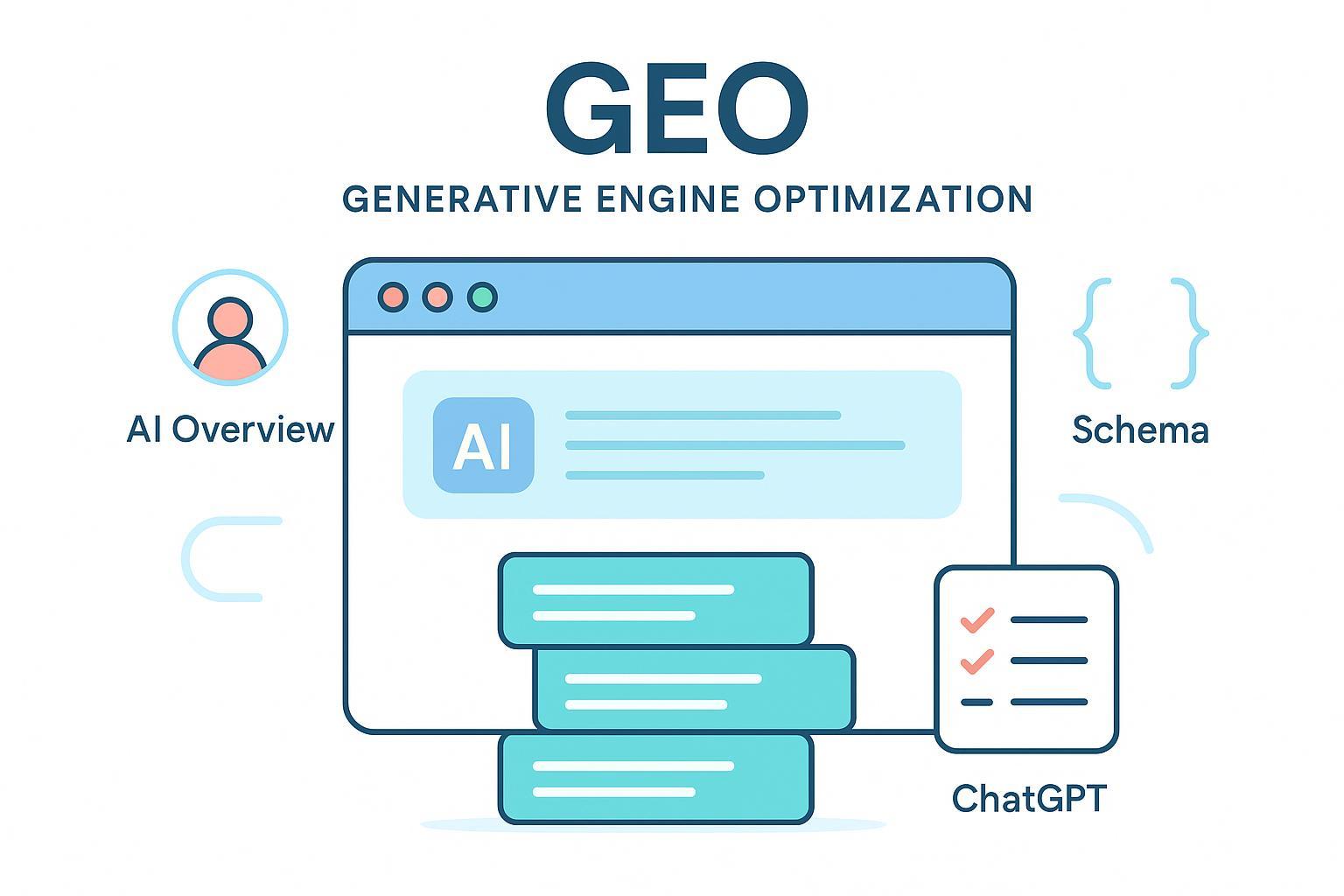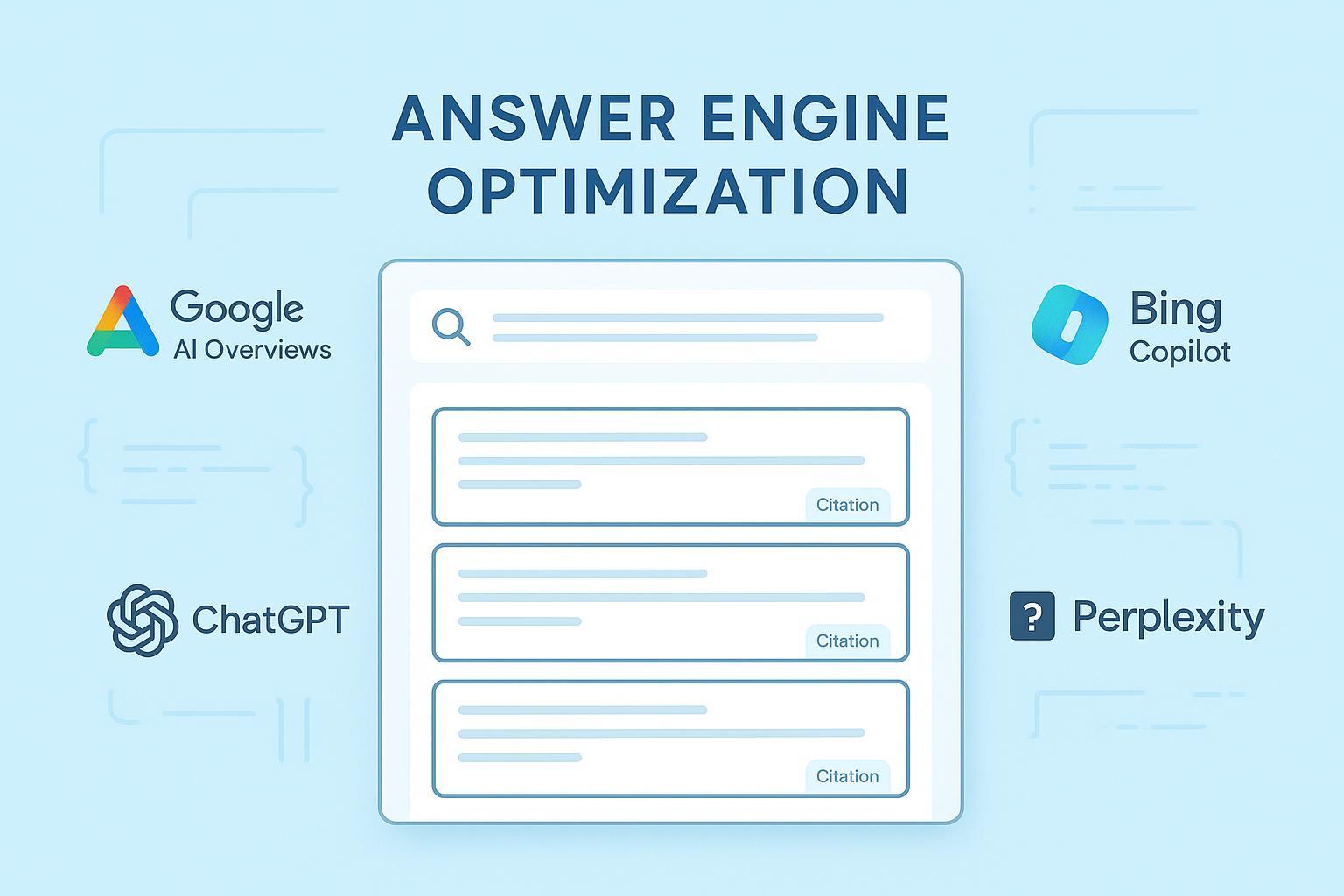GEO vs Traditional SEO in 2025: Key Differences & Winning Strategies
Discover why Generative Engine Optimization (GEO) is now vital vs Traditional SEO in 2025. See evidence on AI Overviews, zero-click trends, comparison by metrics, and how to allocate your marketing budget.

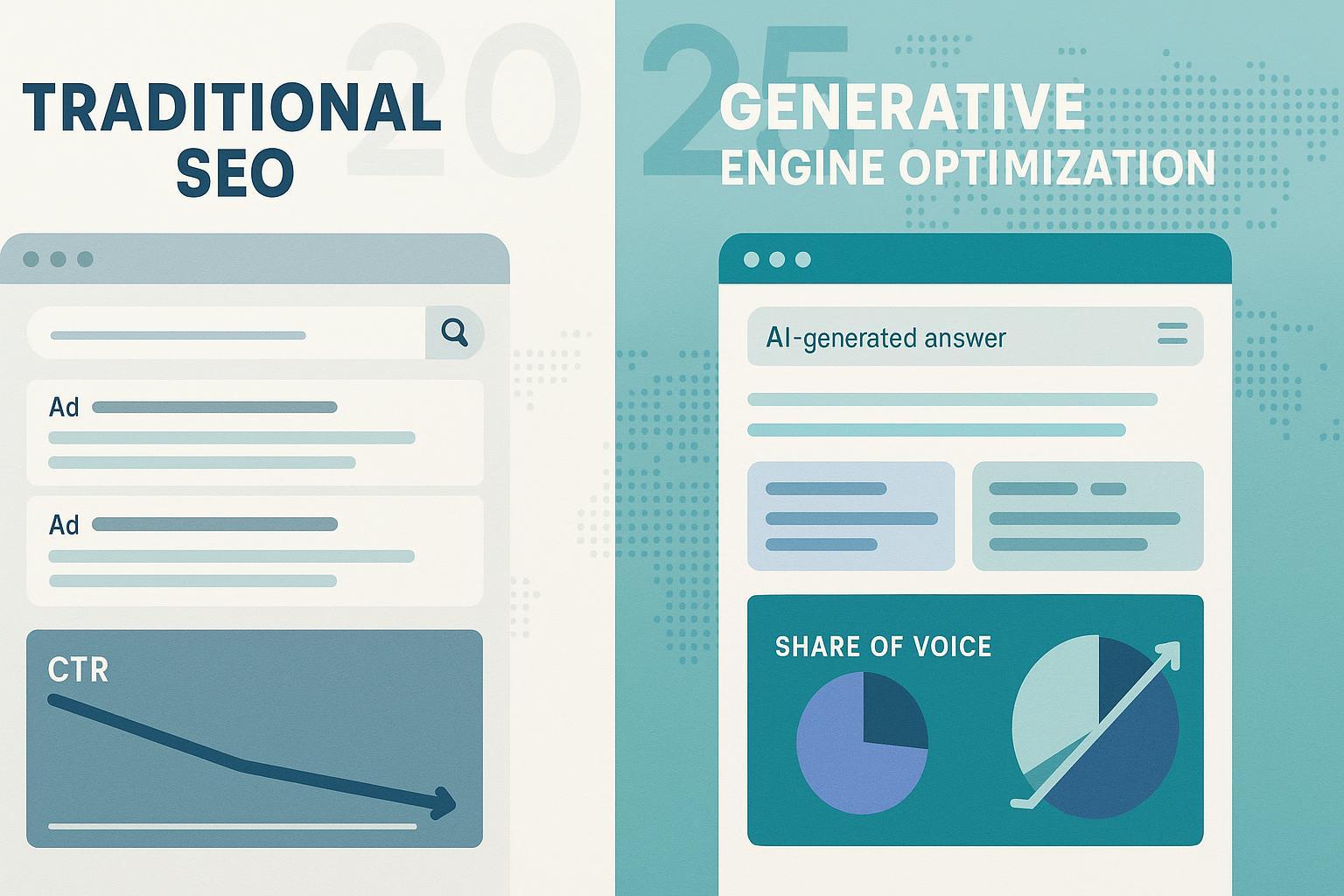
If your organic plan still assumes “rank, get clicks, convert,” 2025 has likely challenged that model. Google’s AI Overviews and answer engines like Perplexity and ChatGPT now intercept more queries with synthesized responses. In practical terms, classic SEO remains essential, but optimizing for AI-generated answers—often called Generative Engine Optimization (GEO)—has become a parallel requirement.
This article clarifies where GEO and SEO differ, why the shift accelerated in 2024–2025, and how to decide budget and effort by scenario.
GEO vs. SEO: The simplest way to think about it
- Traditional SEO: Optimize pages to rank on classic SERPs and earn clicks to your site.
- GEO: Optimize your brand’s content, entities, and citations so AI systems summarize and cite you inside their answers.
For a deeper primer, see this concise overview of what is Generative Engine Optimization.
What changed in 2024–2025
- Google accelerated AI experiences: in May 2025, Google noted AI Mode/Overviews availability across “200+ countries and territories” and “40+ languages,” marking rapid global expansion following 2024’s initial launch in the U.S. (per the Google Search AI Mode update (2025) and the earlier May 2024 AI Overviews launch).
- Click dynamics shifted when AI summaries appear: Ahrefs reported in April 2025 that AI Overviews reduce clicks to top-ranking pages by an average of 34.5% CTR across its dataset year-over-year.
- Zero-click remains prevalent: In 2024, SparkToro’s U.S./EU study found roughly 58.5–59.7% of searches are zero-click, underscoring why “being the answer” often beats “getting the click.”
- Regional constraints persist: In March 2025, Search Engine Land covered how the EU rollout limited access to signed‑in adults in some countries, an example of EU availability constraints that can affect measurement and strategy.
Side-by-side: How GEO and SEO differ
| Dimension | Traditional SEO | GEO (Generative Engine Optimization) |
|---|---|---|
| Primary surface | Classic SERPs (blue links, snippets) | AI-generated answers (AIOs, ChatGPT, Perplexity) |
| Core objective | Earn rankings and clicks | Earn citations/mentions and favorable coverage inside answers |
| Success metrics | Rankings, CTR, impressions, sessions | Citation presence, share-of-voice in answers, sentiment, AIO trigger rate |
| Content approach | Long-form depth, keyword mapping | Fact-rich executive summaries, explicit facts, source transparency |
| Technical focus | Crawlability, internal links, CWV | Schema coverage, entity alignment, provenance, clear authorship |
| Risk management | Avoid thin content; accuracy | Hallucination mitigation, reputational context, expert review |
| Reporting | Traffic and conversions | AI citation trends, sentiment, cross-engine SOV, stability under prompt variance |
Neither model “replaces” the other. SEO keeps the website discoverable and fast; GEO ensures you’re represented accurately and positively where users now consume synthesized answers.
Practical playbooks for 2025
1) Content structure that LLMs can quote
- Lead with an executive summary: 3–6 bullet points or a concise paragraph capturing the definitive facts, figures, and definitions.
- Make facts easy to lift: short, declarative sentences that attribute sources, with dates and units.
- Use semantic headings and tight paragraphs; avoid walls of text.
- Include clear provenance: visible authorship, reviewer credentials (when relevant), and updated dates. Google’s 2025 guidance to developers on “succeeding in AI search” emphasizes clarity, accuracy, and helpfulness; review the Google Developers guidance (2025).
2) Schema and entity alignment
- Prioritize structured data types relevant to your pages (e.g., Organization, Person, Article, FAQPage, HowTo, Product). Ensure validity and freshness.
- Align entities: Use consistent names, disambiguate with authoritative links (e.g., Wikidata/official profiles), and ensure inbound links point with correct brand names.
- Reinforce E‑E‑A‑T signals: subject-matter experts, first‑hand experience, and clear citations. These signals reduce hallucination risk and support correct summarization.
3) Technical and crawler readiness
- Maintain fast, mobile-first performance and clean architecture—the foundation still matters.
- Check robots/crawlers: allow legitimate AI crawlers you want to consume content; block suspicious ones. Audit logs to confirm fetches.
- Keep freshness: schedule updates for statistics-heavy pages and time-sensitive guides.
4) Platform-specific tactics
- Google AI Overviews/AI Mode: Identify target queries that trigger AIOs; craft concise answer blocks and ensure reputable third-party citations corroborate your claims.
- Perplexity: Because it leans heavily on citations, aim to be an authoritative, recent, and well-structured source; maintain bibliographic clarity.
- ChatGPT/other LLM UIs: Expect stochasticity. Validate inclusion with repeated prompts and variations. Improve your odds by being the cleanest, clearest, most corroborated source in the topic.
For a concrete illustration of cross-engine presence, review this short multi‑engine tracking example that shows how visibility varies by query and engine.
Measurement: What to track beyond rankings
Your web analytics won’t capture how often you’re named inside AI answers. Add these GEO-aligned metrics alongside traditional SEO KPIs:
- AI citations and mentions: Presence/absence across engines for each key query cluster; check stability across 3–10 prompt runs.
- Share‑of‑voice in answers: Percentage of answer citations that belong to you vs competitors.
- Sentiment and context: Is your brand framed positively, neutrally, or negatively in the synthesis? Track shifts after content updates or PR events.
- AIO trigger rate: How often a query class produces AI Overviews, and whether you’re cited when it does.
- Coverage by region/device: Especially important where availability differs (e.g., EU constraints discussed in 2025 reporting).
Suggested workflow
- Build prioritized query sets (branded, high‑value non‑branded, comparison/review, support/self‑help).
- Sample prompts across engines weekly; increase cadence around launches and news.
- Record citations, position/order, and surrounding sentiment.
- Annotate content changes, PR moments, and competitor moves. Look for cause‑and‑effect patterns.
- Report trends monthly at the executive level, keeping raw experiments for the SEO/GEO team.
Decision frameworks by scenario
- If AI Overviews frequently trigger on your money terms: Elevate GEO work on those topics. Tighten executive summaries, add schema, and support claims with reputable third‑party citations.
- If branded queries drive significant revenue: Monitor and defend your brand portrayal in AI answers; ensure consistent entity data and address negative or outdated claims with authoritative updates.
- If you compete in recommendation-heavy categories (e.g., “best X,” “top tools”): Pursue inclusion in reputable lists/directories, maintain product spec clarity, and provide original data that earns citations.
- If you’re in regulated sectors (finance/health): Double down on expert review, clear disclosures, and conservative claims. Favor source transparency over conversion-heavy copy.
- If you’re local or services-led: Build location signals (Organization/LocalBusiness schema, consistent NAP), and publish concise service explainers with pricing ranges and policies where possible.
Budgets, teams, and where GEO fits
- Keep funding SEO foundations: site speed, architecture, content depth, and link earning remain prerequisites.
- Add a GEO layer: editorial capacity to create/update answer-ready summaries; technical capacity for schema/entity hygiene; and monitoring capacity for AI citations and sentiment.
- Expect diminishing returns from “rankings-only” goals in AI-heavy SERPs; re-balance toward “answer inclusion” outcomes where AIOs are common.
Risk management: Reducing hallucinations and reputation drag
- Publish verifiable facts and link to primary sources; include dates, units, and definitions.
- Use human expert review for sensitive claims; maintain changelogs.
- Monitor for negative framings or outdated claims in AI answers; publish corrective updates and secure third‑party corroboration.
- Avoid ambiguous branding or product names that collide with homonyms; clarify entities with structured data and authoritative references.
What “good” looks like in 2025
- Pages lead with crisp, source‑attributed facts that are easy to quote.
- Entities are disambiguated and consistent across your site and key profiles.
- Schema is complete and validated; pages show authorship and review.
- You can show executive stakeholders not only where you rank, but where you’re cited across AI surfaces—and whether the portrayal is positive.
Evidence snapshot (for quick context)
- In 2025, Google noted AI Mode/Overviews availability in 200+ countries and 40+ languages, reflecting rapid global expansion after 2024’s U.S. debut: see the Google Search AI Mode update (2025).
- Ahrefs’ 2025 analysis attributed a 34.5% CTR reduction to AI Overviews’ presence on affected queries.
- SparkToro’s 2024 study showed ~58–60% zero‑click searches, illustrating why “being the answer” matters.
- EU rollout conditions documented in March 2025 impacted who sees AI Overviews, per Search Engine Land’s EU coverage.
- Perplexity’s audience grew meaningfully by mid‑2025, with Sacra estimating users and revenue scale in its company profile on Perplexity.
Also consider: Operational tooling
If you’re formalizing GEO measurement—tracking AI citations, answer share‑of‑voice, and sentiment across engines—platforms can centralize the workflow. One option is Geneo. Disclosure: Geneo is our product.
Limitations and caveats
- CTR impact varies by keyword set, SERP layout, and timeframe. Treat 34.5% as directional, not universal.
- Zero‑click estimates depend on clickstream methodologies; validate with your own analytics and Search Console where possible.
- Answer engine outputs are stochastic; measure across repeated prompts and time.
- Regulatory constraints (e.g., signed‑in requirements) can skew regional availability and measurement baselines.
Bottom line: How to allocate effort in 2025
- Maintain SEO health as your baseline—it powers all surfaces.
- Layer in GEO wherever AI answers appear on your priority queries.
- Measure not only clicks, but how often you are the cited answer—and how you are portrayed.
- Iterate: tighten facts, strengthen sources, and monitor shifts across engines and regions.
When you do both well, you’re discoverable in classic search and visible where users increasingly get synthesized answers—positioning your brand to win in 2025’s blended search landscape.


